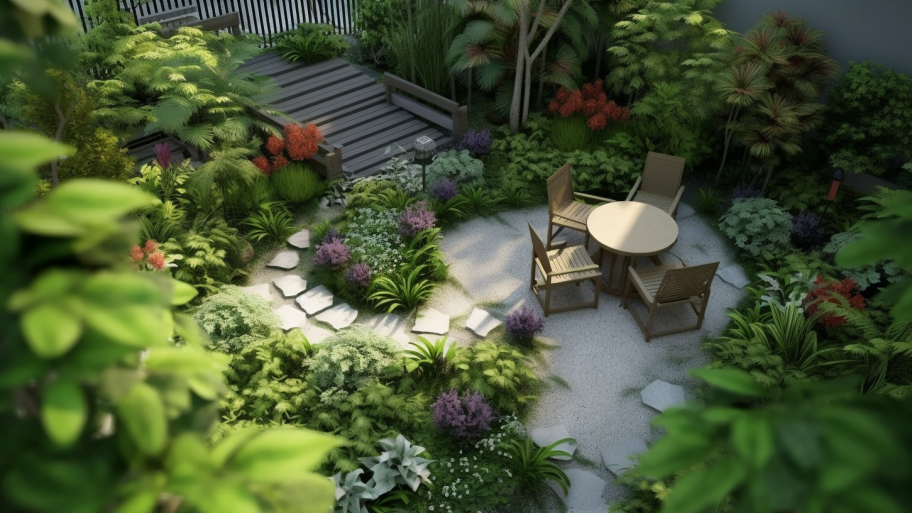When the sun sets and darkness envelops the landscape, a hidden world of glowing organisms comes to life. Bioluminescent fungi and algae create a mesmerizing spectacle as they emit their ethereal light. Imagine having your very own garden filled with these natural nightlights, a magical haven where you can escape into a realm of enchantment. In this article, we’ll explore the fascinating science behind bioluminescence and introduce you to the world of bioluminescent fungi and algae.
The Science Behind Bioluminescence
Bioluminescence is a natural phenomenon that occurs when certain organisms emit light as a result of a chemical reaction. This reaction involves the enzyme luciferase, which breaks down the substrate luciferin in the presence of oxygen, releasing energy in the form of light. Bioluminescence serves various purposes in nature, including attracting mates, deterring predators, and luring prey.
While bioluminescence is found in a variety of organisms, from deep-sea creatures to fireflies, our focus today is on the captivating world of bioluminescent fungi and algae.
Bioluminescent Fungi: A Closer Look
Bioluminescent fungi, commonly known as glow-in-the-dark mushrooms, are a fascinating group of organisms that emit a greenish-blue light. There are over 80 known species of bioluminescent fungi, each with its unique characteristics and habitats. Some of the most well-known species include:
- Omphalotus olearius, or the jack-o’-lantern mushroom, is often found in clusters on decaying wood. This orange, gilled mushroom emits a greenish light from its gills and can be toxic if ingested.
- Panellus stipticus, also known as the bitter oyster, is a small, fan-shaped mushroom that grows on decaying logs and tree stumps. Its bioluminescence is visible on the gill edges and can be seen in low light conditions.
- Mycena chlorophos, native to the subtropical forests of Asia, is a small, delicate mushroom that emits a bright green light from its cap and stem.
- Panellus stipticus, or the Bitter Oyster mushroom, emits a soft green glow and grows on decaying wood, making it an excellent choice for log or stump displays.
- Mycena chlorophos (Glowing Mycena) is a small, delicate mushroom emits a soft green glow and thrives in moist, humid environments.
- Armillaria mellea, or honey mushroom has a mycelium that produces a faint, bluish-green bioluminescence, making it a subtle addition to your garden. Note that the fruiting bodies of this fungus do not glow!
Bioluminescent Algae: Exploring the Glow
Bioluminescent algae, or dinoflagellates, are single-celled organisms that emit light when disturbed. One of the most famous examples of bioluminescent algae is the spectacular “sea sparkle” phenomenon, where entire coastlines are illuminated by the glow of billions of algae.
Some bioluminescent algae species you might consider incorporating into your garden include:
- Pyrocystis fusiformis, a torpedo-shaped algae that emits a bright blue light when disturbed, is often used in artistic installations and decorative water features.
- Noctiluca scintillans, also known as sea sparkle, creates a stunning light display when agitated by movement in the water, making it an excellent choice for water gardens or ponds.
- Pyrocystis fusiformis, or dinoflagellate, is a marine algae species emits a bright blue glow when disturbed, making it an excellent choice for water features with moving elements.
- Dictyostelium discoideum, or slime mold, is not a true fungus, but it exhibits bioluminescent properties in its spore-forming stage, adding a unique and fascinating element to your garden.
As you delve into the world of bioluminescent fungi and algae, you’ll soon discover that there’s a myriad of possibilities for incorporating these magical organisms into your garden. In the next article, “A Symphony of Light: Designing Your Bioluminescent Garden,” we’ll guide you through the process of selecting the right bioluminescent organisms, creating a layout that enhances their glow, and combining these living lights with traditional plants to create a truly enchanting garden. So, let your imagination run wild, and prepare to illuminate your outdoor space with the wonders of bioluminescence as you embark on this luminous journey.




